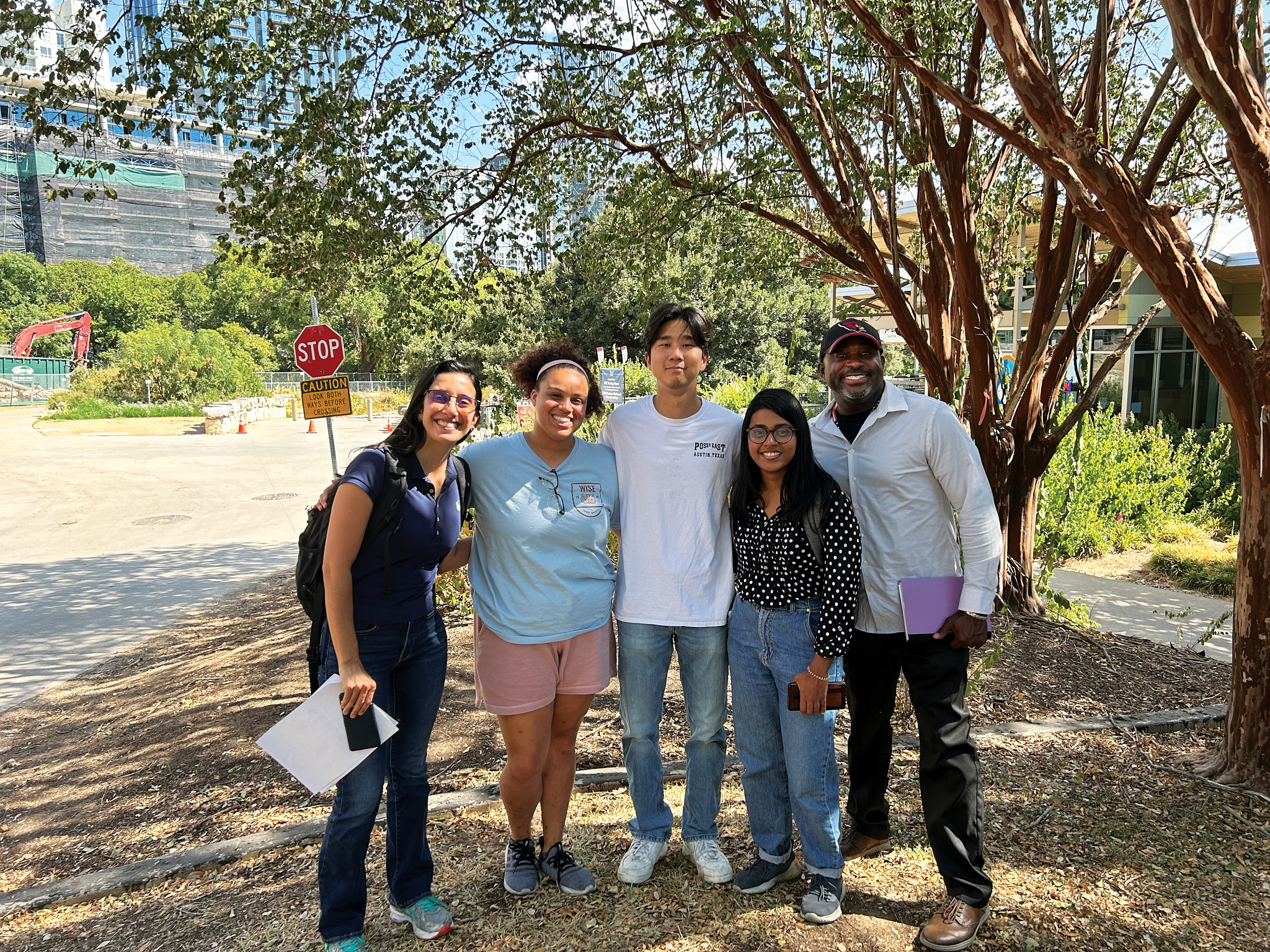Engineering Students Work on Project Connect in Professionalism Course
As Austin grows into a major business and technology hub, the city’s infrastructure must also expand. From higher rent prices to new buildings along the skyline, Austin is changing, and University of Texas engineering students are becoming a big part of that change through this professionalism and ethics class.
In the course, designed by the chair of UT’s department of civil, architectural, and environmental engineering, Bob Gilbert, students are given real-world assignments that they must design and present to their clients. Projects include infrastructure such as bridges, crosswalks, and roadways; clients have included local organizations including the City of Austin and companies abroad such as Engineers in Action who implemented a group of students’ bridge designs in Bolivia.
“It really struck me that if you want to be a good engineer, you have to work closely with the people you’re doing it for, which is the public,” Gilbert says. “There was a need for our students to understand that.”
In the fall 2023 semester, one group of students was assigned to work with Austin Transit Partnership (ATP), one of the many organizations involved in Project Connect, which is an expansion of public transit in Austin including a new light rail electric train. The group was instructed to regrade the pedestrian and bike trail in the Waller Creek District where the light rail will run. Since the light rail is years out from completion, ATP is still in the early stages of design, so they solicited ideas and innovative solutions from the students.

The students visited the site multiple times and met with ATP throughout the semester to make sure they were on track as they worked on the regrading. At one point, they had as many as three solid solutions.
Near the end of the semester, however, one of the group members realized on a site visit that two of their solutions were no longer feasible because of physical obstacles of which they weren’t initially aware, such as stairs and other blockades. Their final presentation to ATP included details on their process of eliminating these other possibilities and reaching a final product.
Thais Lobo-Emond, a civil engineering senior who worked on the ATP project, says she relished the challenge, and she liked that the project was so close to home.
“You actually get to experience talking to real engineers, working on a real-world project that is going to impact the city where you live specifically,” Lobo-Emond says. “I’m very proud of it—having worked on a project in my backyard in Austin.”
Civil engineering senior Ramisha Malaika says she had experience working with clients before, but she has never been able to be a part of the entire process of a project like she was through this class.
“To see a project from the very start to the end, starting from the design phase and then executing it, actually doing the cost estimation and every part—I’ve never done that, contributed to every sector of a project,” Malaika says.
Not only does the class provide students with valuable opportunities, but the clients are benefiting, too. There are multiple clients that come back year after year because they appreciate the partnership so much. Lindsay Wood, the executive vice president of engineering and construction at ATP, says she enjoyed the students’ perspectives on the project.
“Students think about things in a different way because they haven’t ever done it before,” Wood says. “And that kind of fresh energy and perspective is really valuable to us.”
Wood also says ATP values this collaboration because it allows the company to develop connections for future projects.
“It was a great opportunity to engage UT students as a key stakeholder to our project and get them involved,” Wood says. “But it also is wonderful to work with partners like UT to develop that pipeline of future workforce that’s going to be needed to design and ultimately build this project.”
Throughout the process, the students have checkpoints and resources to help them succeed. Along with relying on their group members, they also had mentors from the Austin branch of the American Society of Civil Engineers (ASCE). This partnership has been going on since 2012, says ASCE chair of the UT mentorship committee Marcelo DaSilva. The mentors are available for students throughout the semester and provide feedback on their design work and presentations. DaSilva is a mentor himself, and he finds it to be extremely rewarding.

“I love the interaction with the students,” DaSilva says. “I love to see them go from little knowledge about the project, and at the end, they are delivering something sound to the clients.”
Co-instructor Robert Ramon, BS ’07, shares this sense of pride in the students’ capabilities.
“It’s honestly impressive to observe [them] execute this degree of work and have the composure to present to clients. I would have been terrified of that as a 21-year-old,” he says.
It’s a full circle moment for Ramon in more ways than one.
“I graduated from UT, and I benefited tremendously from excellent professors and the guidance of many, many mentors and supervisors in my career,” he says. “To be able to give that back is pretty cool. It makes me feel proud for sure—especially getting to do it for UT.”
Gilbert has big goals for his students, both in and out of the classroom, and he hopes to create an environment where students are safe to make mistakes and learn from them.
“I want [students] to learn how to work in a team,” Gilbert says. “I want them to learn how to work with the public. I want them to learn how to communicate to a variety of different audiences effectively. And I want them to think about ethics in everything that they do. Because that’s really the heart of professionalism.”





